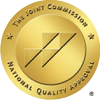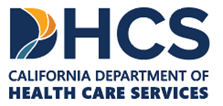Harm “ChemSex” Is Causing The Gay Community
- Home
- Blog
- Uncategorized
- Harm “ChemSex” Is Causing The Gay Community

By Patrick O’Neil
“You may not be familiar with chemsex,”
“You may not be familiar with chemsex,” writes Colin Crummy for Out Magazine, “but if you have been on a hookup app recently you will have come across similar terminology.” Chemsex is a mash up of sex and drugs—“chem” meaning drugs. The sex is either one-on-one or with multiple partners. The term “chemsex” originated in the United Kingdom. In the United States it is also known as party and play or PnP.
Chemsex parties and encounters happen everywhere
“In the gay community, chemsex is often the elephant in the room,” writes journalist Zachary Zane. “Chemsex parties and encounters happen everywhere. They particularly thrive in large, queer-friendly metropolitan cities like New York, Los Angeles, and London.” At a well-attended town hall meeting in West Hollywood the subject of chem-sex was the number one subject on the agenda. “We’re going to talk about sex,” said City Councilman John Duran, “West Hollywood is more than 40 percent LGBTQ and we are a sex-positive community. The reality, though, is that chemsex comes with risks that can be deadly. We know that men who have sex with men are at disproportionate risk.”
The chemsex drug of choice is crystal meth
The chemsex drug of choice is crystal meth. Other party drugs include GHB (gamma-hydroxybutyrate). These drugs are used to increase sexual arousal, performance, and a sense of invulnerability to risk, while decreasing inhibition. The result, health experts say, is causing a spike in addiction— according to a study conducted by New York University close to 20% of the gay community has a drug problem—and worse, chemsex’s risky behaviors are re-fuelling the AIDS epidemics among gay men.
The fight against HIV and AIDS has made dramatic progress in the past decade
“Globally, the fight against HIV and AIDS has made dramatic progress in the past decade,” writes health and science correspondent Kate Kelland, “According to the UNAIDS agency, 1.7 million people were newly infected with HIV in 2018, a 16% drop since 2010. But progress is stalling and the epidemic is tightening its grip in key groups. UNAIDS says more then half of new HIV cases in 2018 were in minority or marginalized groups such as men who have sex with men, transgender people and sex workers.”
“People are not afraid of HIV,” states chemsex specialist Ignacio Labayen.
There is also the term “slam-sex” when people inject drugs. And when they add in “sharing or using dirty needles,” writes Tweakers Project founder Jimmy Palmieri, “[it] can lead to HIV, hepatitis, serious abscesses, infections and a host of other problems.” According to Dr. Lello Tesema, an associate medical director at the L.A. County Department of Public Health Division of Substance Abuse Prevention and Control “For far too long, I think, meth has been overlooked as a public health crisis. While it does not have the same national attention as the opioid crisis, methamphetamine in the Los Angeles area is actually incredibly prevalent and incredibly dangerous.”
According to Palmieri, “The new monster at the party, though, is fentanyl.” The dealers and manufactures are mixing fentanyl into their meth to boost potency. “The user usually has no clue that it has been mixed in with their drugs and it can kill in moments.” With fentanyl laced meth taken in combination with GHB chemsex suddenly got even deadlier.
The desire for total escape.
Yet according to BuzzFeed’s Patrick Studwick, “the sinister side of chemsex is the final product of a process that begins with one thing: Loneliness. What you’ve got with this scene is people trying to not be lonely any more.” Many experts agree with Studwick and cite this prevailing sense of loneliness is due in part to the “internalized homophobia destroying people’s self-esteem, rejection from families prompting a desperate need for connection, a desire for total escape to avoid pain in general, depression, [and] body dysmorphia.”
Within the LGBT community people are feeling pressure to look a certain way.
“We live in a world that is predominantly heterosexual,” says certified drug and alcohol counselor Michael Caruso, “and while people have become more accepting of homosexuality, there is still plenty of stigma that gay men have internalized. If your family doesn’t accept you and the world sees you as something to fear, you’re going to want to escape.
Jason De Puy, a drag queen with eight years of sobriety and West Hollywood town hall panelist said that “the problem is rarely discussed openly. Like many young gay men, he had not been taught about gay sex and was ashamed. He was introduced to crystal meth at a bathhouse, and it seemed to make intimacy easier and more euphoric.” “Meth and sex kept me from having to deal with life,” said De Puy.
CAST Centers offer evidence based treatment for addiction.
Like all addictions and risky behaviors, chemsex continues to harm an already marginalized “party” demographic in the gay community. Drug treatment centers such as CAST Centers offer evidence based treatment for addiction. The stigma of internalized homophobia and the resulting loneliness are issues that need to be addressed.
If you or someone you care about has a problem with drugs and wants to stop… CAST Centers is here to help.
References:
GET STARTED TODAY!
(323) 457-8208
CAST Centers is Proud to Celebrate Over 18 Years
Helping Individuals & Families
Programs
What We Treat
-
Substance Abuse
Insurance
Alumni
Contact Cast Centers
CAST Centers
630 N Doheny Drive
West Hollywood, CA 90069
(323) 457-8208
Email
Administration
632 N Doheny Drive
West Hollywood, CA 90069
(323) 457-8208
Email
Service Area
CAST Centers is licensed by the California State Department of Health Care Services. DHCS Certification for Intensive Outpatient and Outpatient Services.
License Number: 190936BP.
Expiration Date: 8/31/2025.
Copyright © 2022 CAST Centers. All rights reserved.
Privacy Policy | HIPAA | Terms of Use | Site Map


